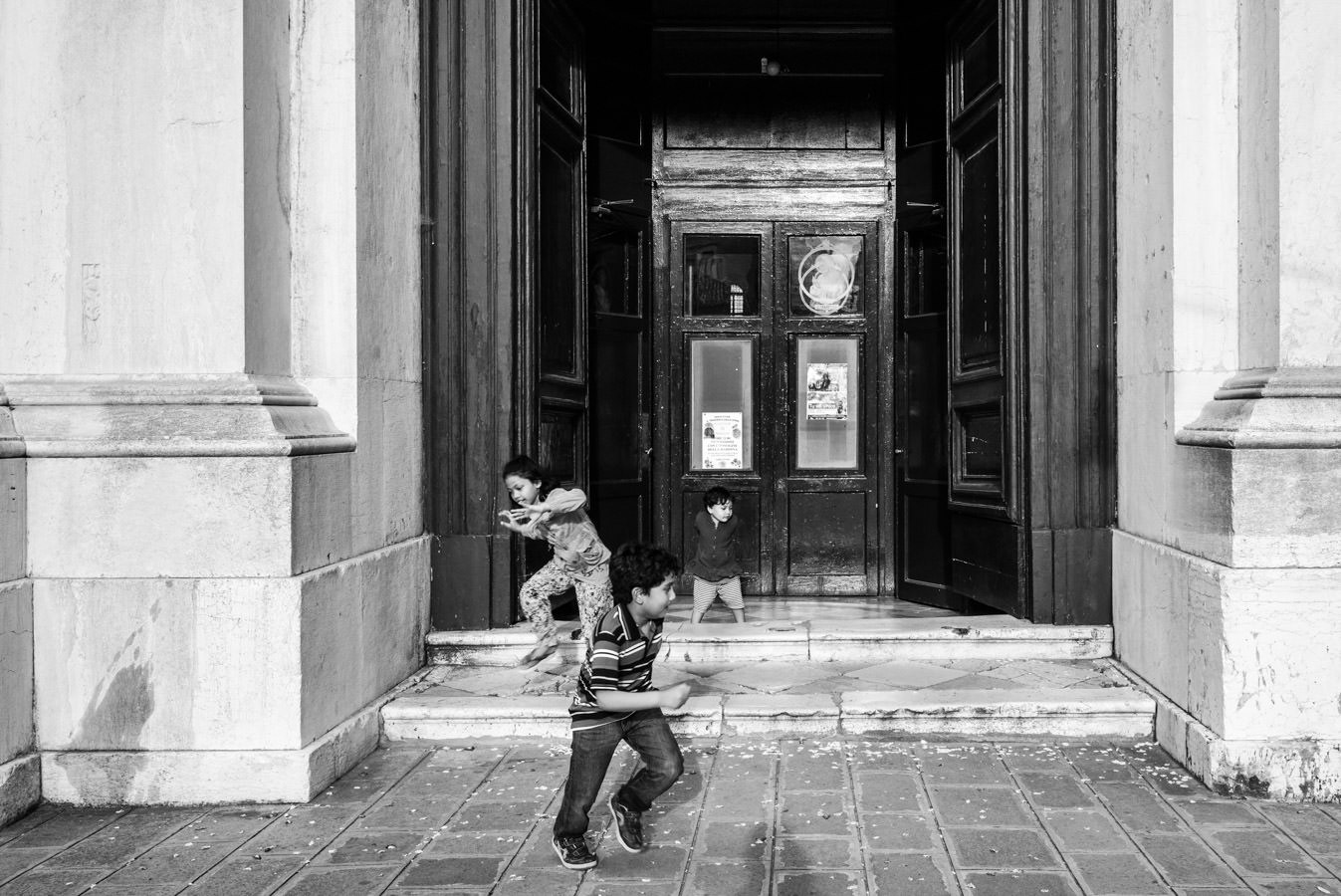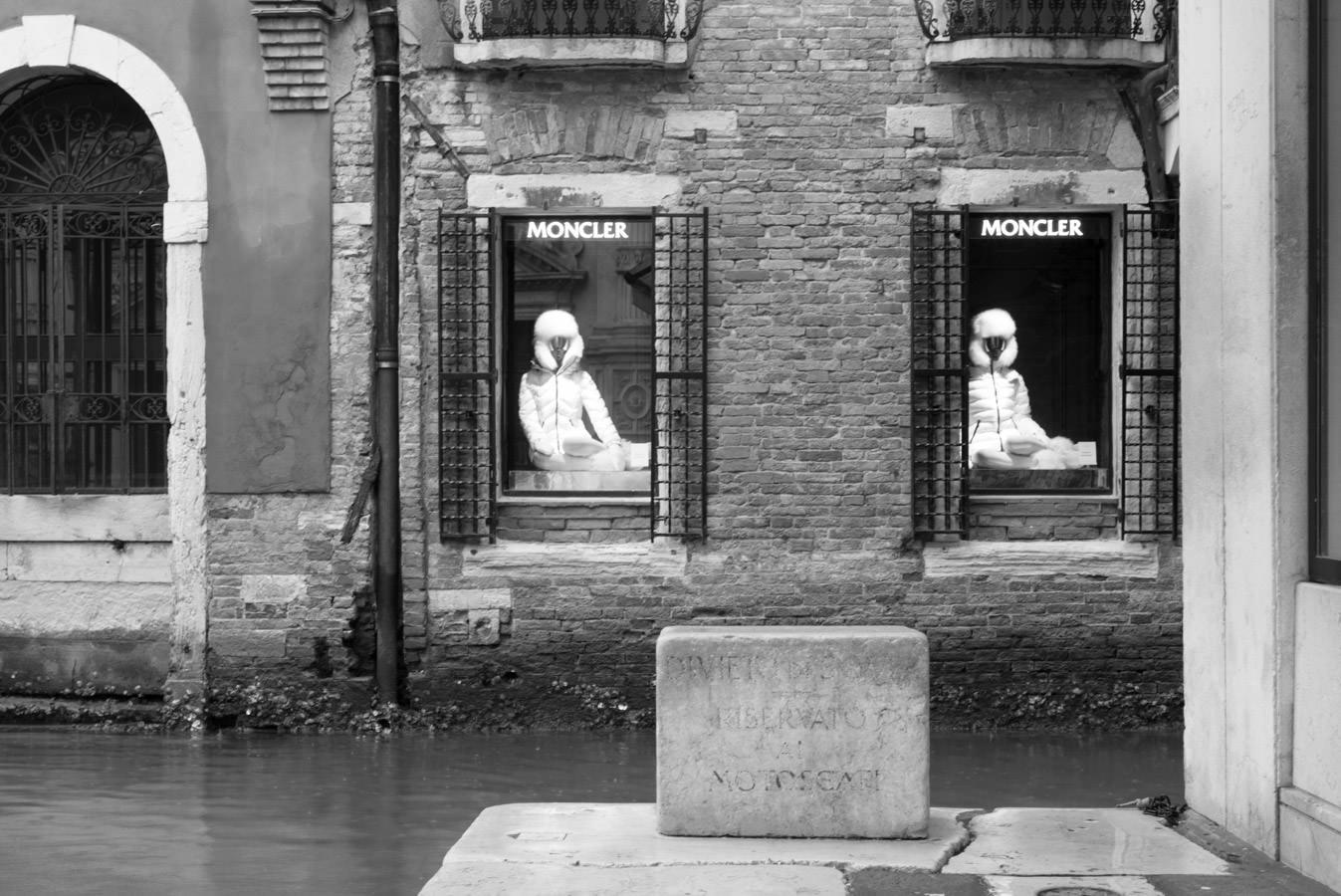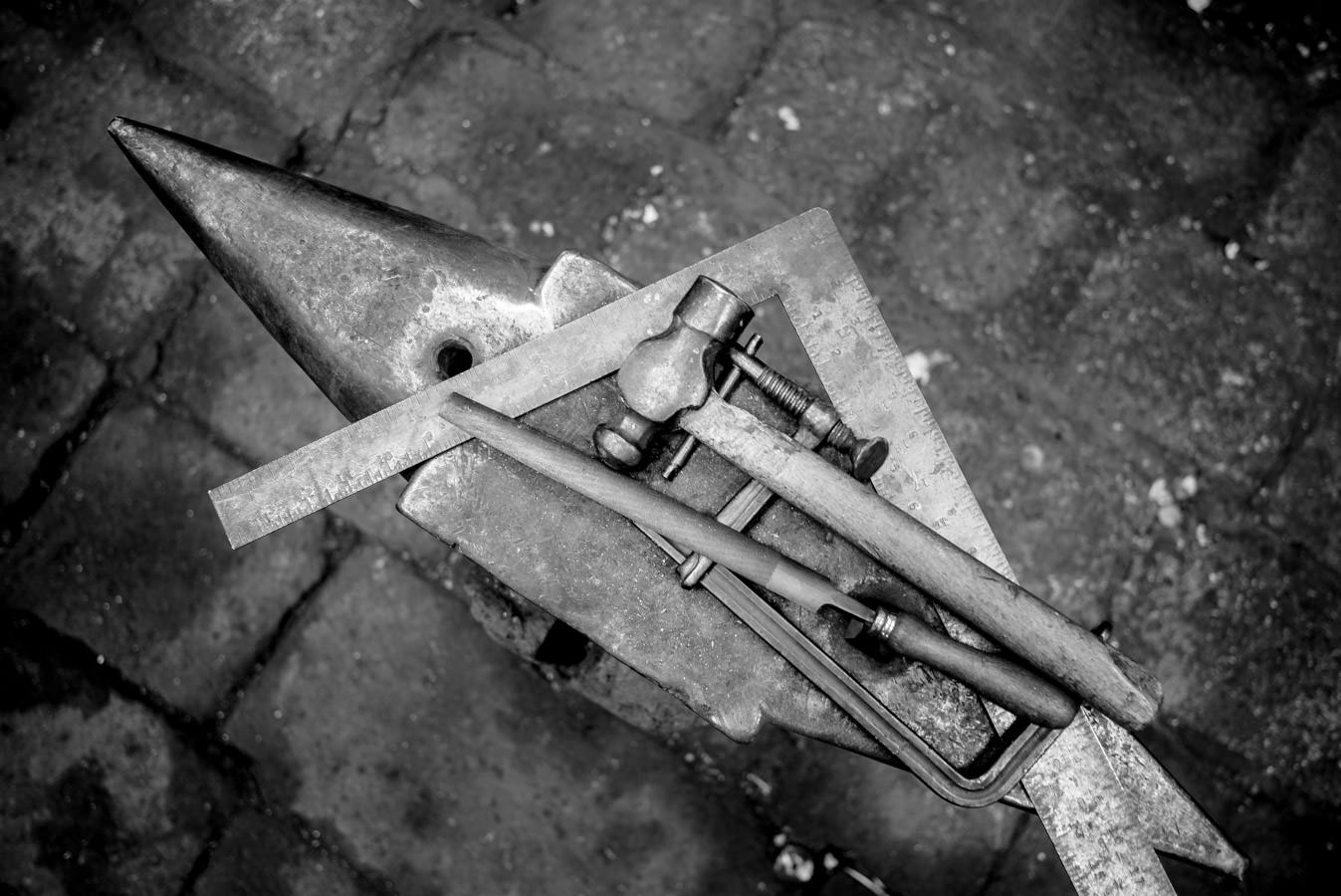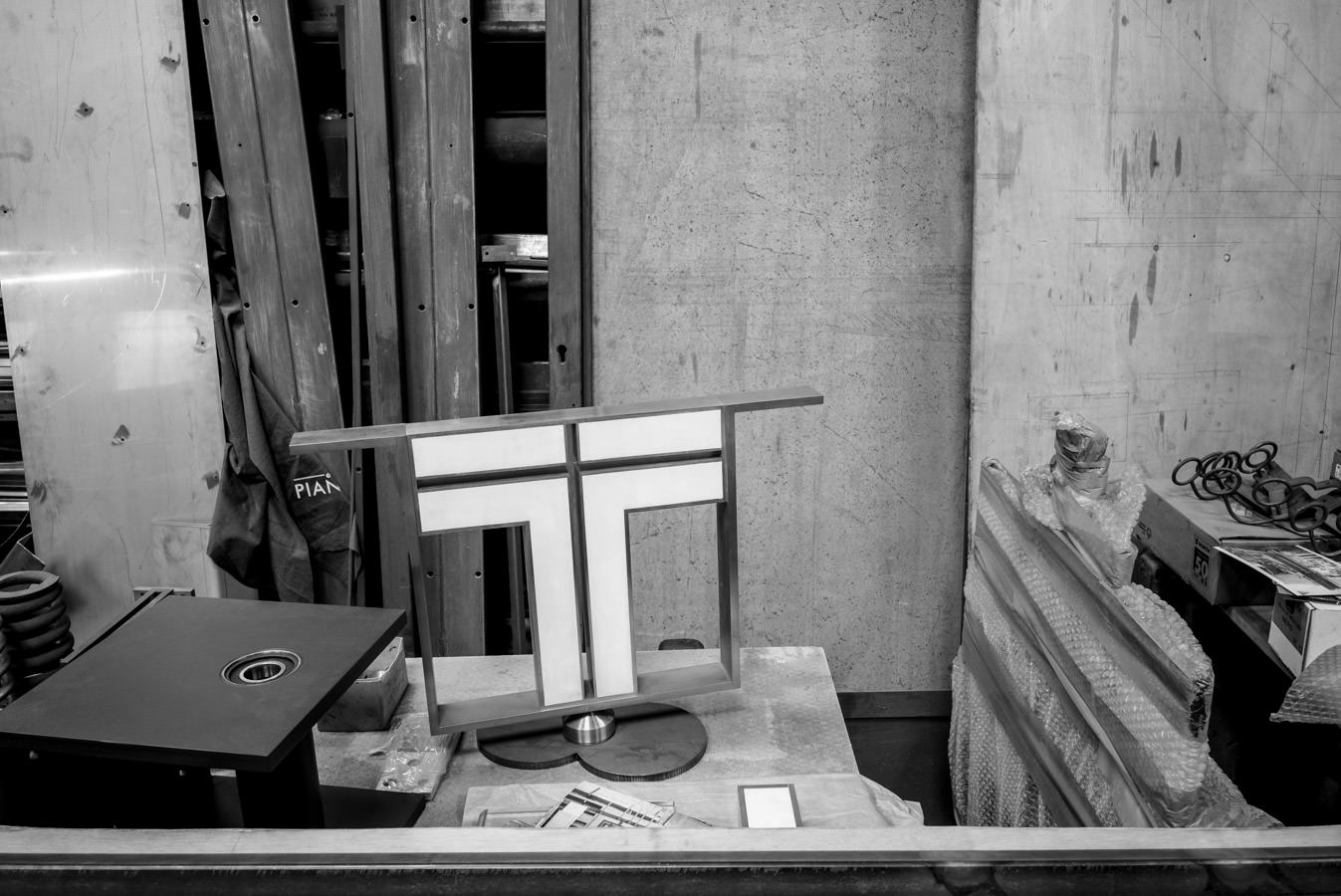A funny stop during the Photo Tour in Castello!
Inside the shop of Aldo Strasse.
This is not just a second-hand-clothes shop, this is a piece of real Venice. Mr. Aldo Strasse owns this shop in Castello since 1973 and inside it's a melting pot of everything. With him, you can talk about photography too, he is very found of Leica, and he has a R4 in the closet behind him.
The shop of Aldo Strasse from outside.
Every time I see the door open, I pay a visit to him, it's always a nice moment of Venetian life!
The third edition of the book "Venice on the edge of light", by Marc De Tollenaere
I am so found of this place that I also included a picture of him inside the third edition of my book "Venice on the edge of light"!


























